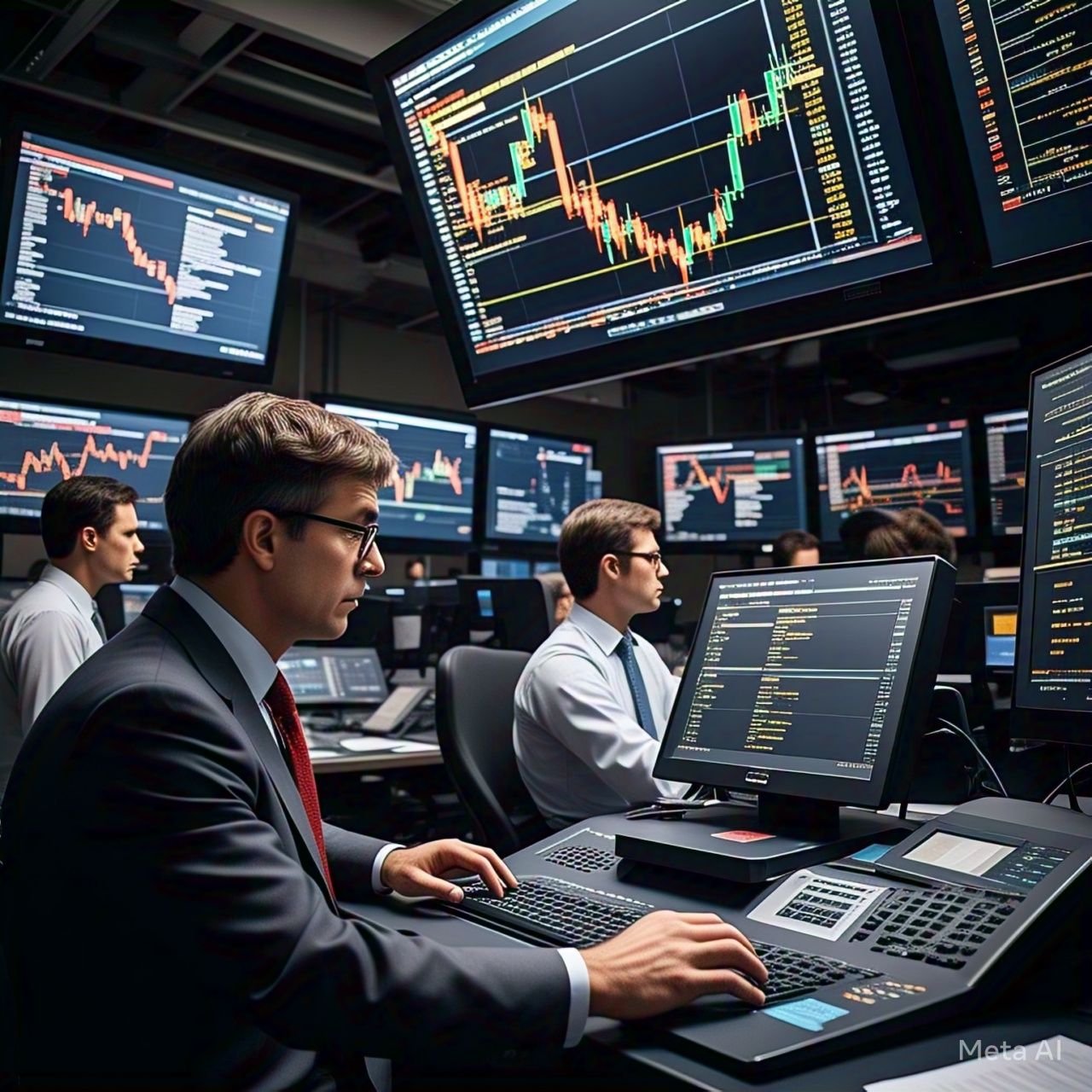Analyzing The Great Decoupling: Causes, Consequences, And Solutions

Table of Contents
Causes of the Great Decoupling (or Lack Thereof):
The success of the Great Decoupling hinges on several interconnected factors. While progress has been made, a complete decoupling remains a significant challenge. Let's examine the key drivers:
Technological Innovation:
Technological advancements are vital for achieving a meaningful decoupling. This involves:
- Increased efficiency in energy production and consumption: The rise of renewable energy sources like solar and wind power, coupled with the development of smart grids for efficient energy distribution, significantly reduces reliance on fossil fuels. Improvements in energy efficiency in buildings, transportation, and industry further contribute to emissions reductions.
- Technological advancements leading to resource-efficient manufacturing processes: Innovations in materials science, industrial design, and manufacturing techniques allow for the production of goods with less resource input and waste generation, minimizing environmental impact. Circular economy principles, emphasizing reuse and recycling, also play a critical role.
- Development of carbon capture and storage technologies: While still under development, CCS technologies offer the potential to capture CO2 emissions from power plants and industrial facilities, preventing their release into the atmosphere. This technology is crucial for decarbonizing hard-to-abate sectors.
Policy and Regulatory Frameworks:
Strong policy and regulatory frameworks are essential to incentivize and mandate a decoupling of economic growth from emissions. Key elements include:
- Carbon pricing mechanisms (carbon taxes, emissions trading schemes): These mechanisms put a price on carbon emissions, making polluters pay for their environmental impact and encouraging the adoption of cleaner technologies. The effectiveness of these schemes varies depending on design and implementation.
- Renewable energy subsidies and incentives: Government support for renewable energy through subsidies, tax breaks, and feed-in tariffs accelerates the deployment of clean energy technologies and makes them more competitive with fossil fuels.
- Regulations promoting energy efficiency and sustainable consumption: Building codes, appliance standards, and fuel efficiency regulations drive improvements in energy efficiency across various sectors. Policies promoting sustainable consumption patterns, such as waste reduction initiatives, also contribute.
- International agreements like the Paris Agreement: International collaborations and agreements set targets for emissions reductions and provide a framework for coordinated global action. However, the success of these agreements depends on the commitment and actions of individual countries.
Economic Factors:
Economic forces also play a crucial role in driving (or hindering) the Great Decoupling:
- Shifting global economic power dynamics: The rise of economies with a focus on sustainable development and green technologies can shift the global economic landscape towards a lower-carbon trajectory.
- Growth of the service sector versus manufacturing: The shift towards a service-based economy, which generally has a lower carbon footprint than manufacturing, can contribute to relative decoupling.
- Investment in green technologies and infrastructure: Significant investments in renewable energy infrastructure, smart grids, and green building technologies are crucial for accelerating the transition to a low-carbon economy.
- Consumer preferences and demand for sustainable products and services: Growing consumer awareness and demand for sustainable products and services create market incentives for businesses to adopt environmentally friendly practices.
Consequences of a Successful (or Unsuccessful) Great Decoupling:
The success or failure of the Great Decoupling will have profound consequences across various sectors:
Environmental Impacts:
A successful Great Decoupling will lead to:
- Reduced greenhouse gas emissions and climate change mitigation: This is the primary goal, reducing the severity of climate change impacts.
- Improved air and water quality: Reduced emissions from fossil fuels will lead to cleaner air and water, improving public health and ecosystem health.
- Increased biodiversity and ecosystem resilience: Addressing climate change and pollution will protect and restore biodiversity and enhance the resilience of ecosystems.
Failure to achieve a strong decoupling will result in the opposite, exacerbating environmental problems.
Economic Impacts:
The economic consequences are multifaceted:
- Creation of green jobs and new economic opportunities: The transition to a green economy will create new jobs in renewable energy, energy efficiency, sustainable agriculture, and other green sectors.
- Increased competitiveness for businesses adopting sustainable practices: Companies that embrace sustainable practices can gain a competitive advantage by attracting environmentally conscious consumers and investors.
- Potential economic losses in carbon-intensive industries (if decoupling is rapid): A rapid transition may lead to job losses in carbon-intensive industries, requiring careful management and support for affected workers.
- Investment risks and opportunities related to climate change: Climate change poses significant investment risks, but also presents opportunities for investment in climate adaptation and mitigation technologies.
Social Impacts:
Social equity is crucial:
- Improved public health outcomes from reduced pollution: Cleaner air and water will improve public health, particularly in areas heavily impacted by pollution.
- Increased energy access and affordability in developing countries: Renewable energy technologies can provide access to affordable and reliable energy in developing countries.
- Potential for social inequality if the transition is not managed equitably: It's essential to ensure that the transition to a green economy benefits all segments of society, avoiding exacerbating existing inequalities.
Solutions and Pathways to Achieving a Strong Great Decoupling:
Achieving a strong Great Decoupling requires a multi-pronged approach:
Investing in Green Technologies:
This includes:
- Funding research and development of renewable energy sources: Continued investment in R&D is essential to improve the efficiency and affordability of renewable energy technologies.
- Supporting the deployment of energy-efficient technologies: Incentivizing the adoption of energy-efficient appliances, buildings, and transportation systems is crucial.
- Investing in smart grids and sustainable infrastructure: Modernizing energy grids and investing in sustainable infrastructure are essential for managing the transition to renewable energy.
Implementing Effective Policies:
Strong policies are vital:
- Strengthening environmental regulations and standards: Enforcing stricter environmental regulations and standards is necessary to reduce emissions and promote sustainable practices.
- Implementing robust carbon pricing mechanisms: Effective carbon pricing is crucial to internalize the environmental cost of carbon emissions.
- Promoting international cooperation on climate change: Global cooperation is essential to address a global challenge like climate change.
Fostering Sustainable Consumption and Production:
Shifting consumption patterns is essential:
- Raising public awareness about the importance of sustainability: Educating the public about the environmental and economic benefits of sustainability is critical.
- Encouraging sustainable lifestyles and consumption patterns: Promoting sustainable lifestyles, such as reducing waste and consuming less energy, is essential.
- Promoting circular economy models: Adopting circular economy models, which emphasize reuse, recycling, and waste reduction, can significantly reduce environmental impact.
Ensuring a Just Transition:
Addressing social equity is critical:
- Supporting workers and communities affected by the shift away from carbon-intensive industries: Providing retraining and reskilling programs and other support for workers and communities affected by the transition is essential.
- Investing in retraining and reskilling programs: Preparing workers for jobs in the green economy is crucial.
- Ensuring equitable access to the benefits of a green economy: The benefits of the transition must be shared equitably across society.
Conclusion:
The Great Decoupling represents a critical juncture in our efforts to address climate change and build a sustainable future. While technological advancements, supportive policies, and economic shifts are essential drivers, achieving a meaningful and equitable decoupling requires concerted global action. By investing in green technologies, implementing effective policies, fostering sustainable consumption, and ensuring a just transition, we can strive towards a future where economic growth and environmental protection are not mutually exclusive. Let's continue the conversation and actively work towards a successful Great Decoupling, ensuring a healthier planet for future generations. Learn more about the intricacies of the Great Decoupling and how you can contribute to its success.

Featured Posts
-
 Indian Stock Market Soars Sensex And Niftys Significant Gains Analyzed
May 09, 2025
Indian Stock Market Soars Sensex And Niftys Significant Gains Analyzed
May 09, 2025 -
 Get Elizabeth Arden Skincare For Less
May 09, 2025
Get Elizabeth Arden Skincare For Less
May 09, 2025 -
 Polish National And Female Acquaintance Deny Mc Cann Family Harassment
May 09, 2025
Polish National And Female Acquaintance Deny Mc Cann Family Harassment
May 09, 2025 -
 Analyzing The Bitcoin Price Trumps Influence And The 100 K Question
May 09, 2025
Analyzing The Bitcoin Price Trumps Influence And The 100 K Question
May 09, 2025 -
 Investigation Leads To Nc Daycare License Suspension Key Findings
May 09, 2025
Investigation Leads To Nc Daycare License Suspension Key Findings
May 09, 2025
